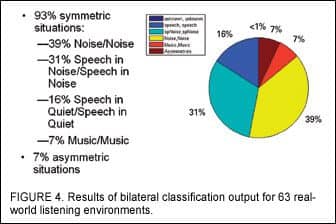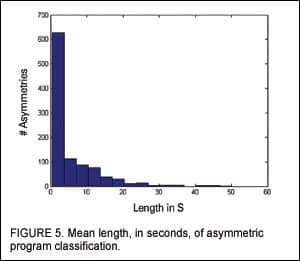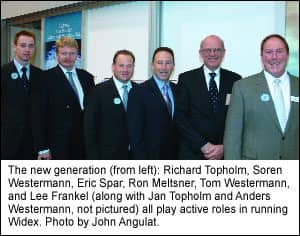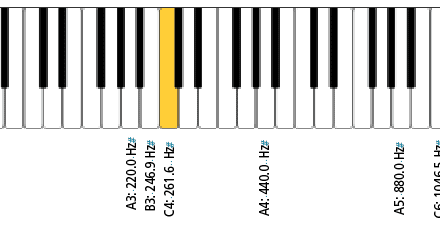Appropriate gain and output settings are crucial for every hearing instrument fitting. While prescriptive formulae provide a valid starting point, they are lacking in individual preciseness. Moreover, it is difficult to predict preferred gain in real-world listening situations based on clinical testing.
An effective implementation to address this issue has just been introduced by Siemens in CENTRA™ with the Learning Volume Control (LVC) feature. This is the first hearing system with a volume setting that can be trained by the wearer (or, alternately, the wearer preferences are learned by the hearing instruments). The training happens automatically and in real time.
This paper reports on the research supporting this new technology, the fitting options for the LVC are explained, and general fitting guidelines for this new technology are provided.
Now That We Have More Information, What Do We Do With It?
One recent technology developed to improve hearing instrument fitting and patient satisfaction has been datalogging. Current datalogging systems, however, have some limitations. Logged data still require that professionals analyze, review, and make decisions regarding fine-tuning adjustments for gain and output. This results in more effort on the part of the professional and more repeat office visits for the wearer.
Additionally, if gain and output changes are indeed made by the professional based on logged data, these changes still require validation to determine if they are satisfactory to the wearer, which in general tends to prolong the overall fitting process. While logged data regarding usage are probably better than no data at all, professionals today are still left with many of the same fitting dilemmas regarding the determination of optimum real-world gain and output.
Trainable hearing instruments—or instruments that actively learn and adapt based on logged data—have been discussed in the literature as representing the next major advance in this area.1 Researchers have conceptualized learning instruments that would allow wearers to actually fine-tune their own hearing instruments in their personal listening situations. This is a major step in overcoming some of the shortcomings of current fitting procedures, and represents true customization in hearing technology. While current datalogging systems log information, data learning or trainable systems automatically apply changes to the instruments based on the data, thereby optimizing the instrument settings for the wearer in real time.
Individualized Gain Settings
Perhaps the most fundamental component of a hearing instrument fitting is obtaining appropriate gain and output settings. While this objective is well recognized, and is addressed in the fitting software from all manufacturers, the methods used to determine appropriate gain often do not result in an outcome that is optimal.
This is not so much a fault of the fitting software, prescriptive method, or selection procedures per se, but rather a reflection of the large number of individual variances present and the diverse listening situations experienced by hearing instrument wearers. We know, for example, that even when hearing instruments are fitted according to a validated prescriptive method and the method is verified in ear-canal SPL, a large percentage of hearing instrument wearers report dissatisfaction with the resulting loudness levels. Many of those who have hearing instruments equipped with a volume control report that it is necessary to adjust the gain several times per day for different listening environments.
Each hearing-impaired individual obtaining hearing instruments has a different damaged auditory system, listening experience history, different expectations, personality traits, and listening needs. While validated prescriptive methods are a good starting point for the average patient, there are several reasons why there is a need for an improved individual method of achieving optimal hearing instrument gain and output. The following summarizes some of these reasons.
Accuracy of prescriptive fittings. Over the years, considerable research has been devoted to prescriptive methods that predict optimum gain for individuals based on their hearing thresholds. In some cases these methods have focused on a loudness equalization approach, while other methods have been geared more toward loudness normalization.2-6 Each method provides prescribed average gain, which has been validated in applied research.
A systematic review of the literature on this topic reveals that these average gain values, such as those employed by the NAL-NL1, serve as a reasonable starting point in hearing instrument fittings for adults.7 However, because these are average values, and the standard deviations for desired gain are quite large (eg, 6–7 dB)8, there will be many people fitted with a gain setting that they may perceive as either too soft or too loud. There is research that suggests that changes in gain of ~5 dB or more will be perceived by the listener.9 This leads to the prediction that as many as one-third of the patients fitted to a prescriptive method would need some further gain adjustment to reach their optimum setting.
Listening in the real world. In most cases, hearing instruments are fitted in an acoustically sterile clinic or office. These settings typically lack the reverberation, background noise, and variety of acoustic inputs that the hearing instrument wearer experiences in the real world. To a certain extent, it is possible to simulate real-life listening conditions in the clinic, but due to the endless variety of listening conditions in real life, this simulation usually will be insufficient.10
Moreover, it is understandable that many patients cannot provide adequate input or sufficiently judge the gain required for their individual listening situations during the fitting process. Usually there are time constraints, and for many patients (especially the elderly), the total experience can be quite overwhelming. Ideally, decisions regarding optimal gain should be made over an extended period of time in more relaxed and realistic settings, such as the patient’s everyday listening environments.
Listening in different situations. The typical hearing instrument wearer has different gain requirements for different listening conditions.11 A common example would be a patient who, at different times of the day, needs to listen to speech in quiet, speech in background noise, and music. Would he need or want the same gain for these three very different listening situations? Probably not.
What is needed, therefore, is not only a real-world gain setting, but a real-world gain setting for specific listening situations. These settings are difficult to establish during the time constraints of the typical hearing aid fitting process.
Auditory acclimatization. It is recognized that there is some loudness acclimatization for new hearing instrument wearers, or previous users fitted with new technology.12 The degree of acclimatization varies significantly from person to person, and also can vary for input level.
For example, there may be more acclimatization for soft inputs than louder input signals, especially if they have been inaudible for an extended period of time.13 To address this issue, many manufacturers have provided acclimatization adjustments in their hearing instrument fitting software. This approach is haphazard, however, because it is nearly impossible for the professional to know when, if ever, the patient is ready to move on to the next acclimatization step. Moreover, if the patient does not return regularly to the clinic, the hearing aids may remain programmed to an inappropriate acclimatization step. Therefore, it would be helpful if patients controlled the hearing aid settings related to the acclimatization process in their everyday listening environment.
Volume control adjustments. The majority of hearing instruments have a volume control, which allows the patient to “correct” some of the limitations of the gain selection process. However, constantly changing the hearing aid volume for different listening situations is not a pleasant experience for the wearer. In addition to being an inconvenience, it suggests to the wearer that this new “modern” hearing instrument has the same problems as hearing instruments of 50 years ago.
Also, in most cases, changing the hearing instrument volume requires an action that is visible to others, drawing attention to the hearing instrument. Not only does this fuel the hearing instrument stigma effect—a leading reason why people do not use hearing instruments— but it also sends a strong message to other prospective wearers that hearing instruments don’t work very well.
Eliminating the volume control. There are several reasons why hearing instruments are recommended without a volume control. Often, it is related to the size of the instrument or the fitting philosophy of the dispenser. Other times it is related to the physical or mental condition of the patient. Regardless of the reason, this places an added burden on the professional to program hearing instrument gain settings that are at or near optimum. Again, because of factors already discussed, this “ideal” setting, however, should be based on the patient’s real-world listening needs rather than “average” values.
New Technology to Assist with Gain Optimization
The preceding section described several factors which can have an impact on achieving optimal gain. The best solution for all of the issues mentioned is a hearing instrument that is trainable—in other words, a hearing instrument that is able to actually automatically learn what the wearer teaches it. The principle of such a trainable hearing instrument has been investigated scientifically in the past years by several researchers (J. Zakis, H. Dillon, and H. McDermott, unpublished manuscript, 2006; W.A. Dreschler, G. Keidser, and E. Convery, unpublished manuscript, 2006; G. Keidser, E. Convery, and H. Dillon, unpublished manuscript, 2006). A comprehensive review article on this concept has been published recently by Harvey Dillon and colleagues.1
CENTRA’s “Learning VC” (LVC) is, to the authors’ knowledge, the first commercially available realization of a trainable hearing instrument. The LVC is designed to learn the individual’s preferred and situation-specific volume settings in everyday life.
Since situation-specific learning requires bilaterally synchronized program switching and volume adjustment, a technology to couple and synchronize left and right hearing instrument is mandatory. The e2e wireless™ (ear-to-ear) system by Siemens (Powers and Burton, 2005)14 not only fulfills this prerequisite, but also offers the possibility of “split control” hearing instruments (ie, push button for memory selection on one instrument and a VC on the other). Thereby, maximum ease-of-use and a smaller sized hearing instrument are guaranteed.
Design Rationale
While it may be desirable to have learning for several factors, including noise reduction and compression controls, there are good reasons to restrict the trainable parameters of the first learning hearing instrument to gain.
First, finding the optimum overall gain is still the most important fine-tuning task for professionals. By far, the most frequent client complaints and descriptions in troubleshooting are related to overall loudness.15 Moreover, extensive hearing instrument customer surveys indicate that hearing instruments, which always give the preferred loudness, are a great advance over existing hearing instruments.16,17 Second, learning other parameters—such as channel gains, compression thresholds, compression ratios, strength of noise reduction, etc—would be easy for the hearing instrument, but too bothersome and difficult for the teacher (ie, the hearing instrument wearer).
A volume control mounted on the hearing instrument, or as part of a remote control, has been proven to be an easy-to-use and easy-to-understand user control for wearers. By using a common and easily understood control like the VC, the wearers train the hearing instruments simply by using the control in their daily lives. No additional effort is required by the wearer, and no additional effort in counseling or teaching is required by the dispenser for the patient to benefit from trainable instruments.
How the Learning VC Works
The example in Figure 1 illustrates how the CENTRA “learns” an optimized volume setting. The gray line segments represent the volume settings on a daily basis. Arrows indicate the VC changes carried out by the hearing instrument wearer. Observe that while there was no VC change on the first day of hearing instrument use, this patient reduced the volume by 10 dB on the second day. Because of this, when he switches the hearing instrument “on” during the third day, the LVC activates an optimized volume setting. This is accomplished by averaging all past VC changes, with more recent changes emphasized. This calculation is represented by the blue line in Figure 1.

The LVC optimizes volume by changing the VC power-on position rather than the hearing instrument’s master gain. At the follow-up session, the professional can decide whether the learned VC position should be translated into a master gain adjustment and whether the VC power-on position should be reset to the middle position (see “Software Fitting Options” in this article). Observe that the required manual VC change is already remarkably smaller on the third day, although the same volume setting (-10 dB) was preferred as on the second day.
In field trials with hearing-impaired listeners, the minimum learning period was found to be about 1 to 2 weeks. Typically, toward the end of one week of learning, volume changes become smaller, and the learned volume approaches the optimum long-term setting.
Situation-Specific Learning
Since preferred gain often varies for different listening situations (eg, speech in quiet, speech in background noise, music, etc), it is important to allow for independent learning in multiple programs.
Figure 2 shows program and volume changes on one day for a three-memory hearing instrument. Program 1 is assigned to “Universal” (because this hearing instrument has fast-acting noise reduction, there is no need for a separate program for “listening in noise”). Program 2 has been pre-selected for listening to “Music,” and Program 3 has been designed for the “Telephone.”

To finish learning within the same time span as with a single program, the learning time constants for the multiple-memories are shorter than for a single-memory hearing instrument. Thus, the learning VC learns about four times faster in Program 1 and Program 2 (“Universal” and “Music”) than in the single-program example of Figure 1. Since it is assumed that the telephone program will be used only on the telephone and, therefore, less than 2 hours per day, the learned VC change approaches the optimum setting in this program even faster than with the other programs. The different time constants are chosen automatically by the fitting software, depending on the number of activated programs and the situations selected in “Program Selection.”

Behavioral Research with the LVC
While electroacoustic research with the LVC confirmed the desired function, and thus the efficacy of the product, it was also important to conduct behavioral research to assess effectiveness and patient benefit for the LVC in the real world.18
Advantage of hearing instrument coupling. As mentioned earlier, one of the key components of the CENTRA LVC processing is the coupling of the right and left hearing instruments using e2e wireless during the learning process. To determine the effect that coupling would have during the learning process, a group of 10 hearing-impaired individuals participated in a crossover design study. The two conditions of the study were: Using the LVC for a bilateral custom ITE fitting with the two hearing instruments coupled, and a second condition that involved using them in an uncoupled manner — that is, each hearing aid could “learn” independently. The hearing instruments were fitted according to the Siemens CENTRA FirstFit™ protocol with three different programs, and minor gain and compression adjustments were allowed to assure that the two hearing instruments were “balanced” at the time of the initial fitting. The participants used each of the two counterbalanced fitting arrangements for a 1-week trial in their everyday environment.
At the end of the week-long trial with each fitting arrangement, the participants were asked to rate how well sounds were balanced between ears during the learning period. They rated the loudness balance on a 5-point scale: 0 = Extreme difference between ears; 2 = Noticeable difference between ears; and 4 = No difference between ears. The results of this rating are shown in Figure 3. Notice that for the uncoupled condition, the median rating was a “noticeable difference” and the 25th percentile approaches the “extreme difference” category. In contrast, for the coupled condition, the median rating was the #4 rating of “no difference.” Examining individual data reveals an average mismatch for the left and right instruments in the uncoupled condition of 6 dB, with one participant having a large mismatch of 13 dB between instruments.

These overall findings clearly show the advantage of using coupled hearing instruments during the hearing instrument learning process.
Time Course of Learning
A second area of interest regarding the LVC was the time course for learning. That is, are gain adjustments relatively stabilized after 1 week, or does significant learning continue for a longer period? To answer this question, a group of experienced hearing instrument wearers were fitted bilaterally with the hearing instruments for real-world testing. The hearing instruments were intentionally programmed with gain that was 9 dB below the software’s FirstFit algorithm to increase the likelihood that gain adjustments would be necessary.
Illustrative cases from the study are shown in Figure 4. Observe that for Week 1, all subjects had the expected increase in gain, which was as much as 10 dB for Subject #3. Note, however, that for Week 2, no subject had more than a 3 dB change in gain. Given that differences of 3 dB or less are usually not noticeable, these data—and the group data from this research—suggest that the majority of learning is completed after 1 week of hearing instrument use. This of course will vary depending on the amount of time the patient uses the hearing instruments, and the variety of conditions that are experienced.
The data in Figure 4 also support what we discussed earlier—the potential need for individual adjustment away from the prescribed “average” fitting. Recall that all four participants were fitted with gain that was 9 dB below their prescriptive targets. Observe, however, that after 2 weeks Subject #3 had raised gain by 13 dB (4 dB above prescriptive target) whereas Subject #2 only had a 1 dB increase (8 dB below prescriptive target)—a 12 dB difference among subjects.
Learning for Different Memories
Today, most hearing instrument wearers utilize hearing instruments that have multiple memories. As mentioned, intuitively, it would seem important to conduct independent learning for each hearing instrument program.

Figure 5 shows the mean and range of change for each memory after the learning period. Observe that, on average, no significant changes in gain were made and the changes were similar for each memory. This in fact supports that the gain settings prescribed by FirstFit in the programming software are a reasonable starting point, and indeed appropriate for the “average person.”
As discussed earlier, however, most people are not “average,” which is illustrated by the range of adjustments for each of the three programs. Observe that the range is 12-15 dB across programs.
To further illustrate the importance of individual learning, Figure 6 shows the results for five of the participants from this study. Notice that some showed a large change in gain for Program 1 (Subject MH), whereas others showed large changes in Program 2 or 3 (Subjects BH and JL). Some needed to increase gain by 6 dB or more, while others had to reduce gain by 6 dB or more. Finally, one subject had little learning for any of the three programs (Subject LE). This clearly illustrates how the LVC can assist patients in obtaining optimum gain for all hearing instrument programs.
If we examine what percentage of subjects required a change of gain exceeding 3 dB, the data reveal that 29% had this degree of change for Program 1, 38% for Program 2, and 24% for Program 3.
Optimizing Gain: Lab vs Real Life
In a similar study as described above, 20 first-time wearers with mild-to-moderate hearing loss were fitted with CENTRA S VC at Oldenburg University. Interestingly, the results with regard to learning in multiple memories look very similar — although hearing loss and hearing instrument experience differ remarkably. This supports the notion that the benefits of a hearing instrument with a LVC does not depend on hearing loss or hearing instrument experience.

In this study, loudness was also assessed directly after the FirstFit procedure. Most subjects rated loudness as “satisfactory.” However, an analysis of the learned VC change in CONNEXX™ revealed that 75% of these subjects preferred changes of more than 3 dB after learning in real life (Figure 7). This means that not only did the subjects who rated loudness as “too soft” or “too loud” in the clinic benefit from LVC, but most subjects who reported being satisfied with the overall gain directly after FirstFit also benefited from the LVC experience. These data again show clearly that loudness should preferably be optimized in individual everyday listening environments.

As has been discussed, DataLearning™ is a novel hearing instrument feature designed to help both professionals and patients in selecting the optimal gain. Some general guidelines regarding the fitting of this algorithm, and patient counseling related to its processing are:
1. There is no specific audiometric profile for the LVC algorithm. The technology applies to all types of hearing losses and configurations.
2. Research has shown that, in general, both new hearing instrument wearers and experienced wearers will benefit from the LVC.
3. Since there is no drawback using the LVC, it is recommended to use this feature regularly. In particular, it is recommended in the first weeks after FirstFit.
4. For bilateral fittings, coupling of programs and VC should be activated.
5. The recommended VC range for learning is 16 dB.
6. Even with a LVC, accurate audiometric data are required to have a good starting point for the learning period in everyday life. Starting learning at the FirstFit for average is recommended.
7. The minimum learning period for achieving reliable results is 1 week. It’s unlikely that significant learning will occur after the second week (unless the patient isn’t using the hearing aids regularly). It is recommended to activate the LVC at the initial fitting, so that learning can occur as quickly as possible.
Software Fitting Options
CONNEXX software displays the preferred VC settings of the instrument wearer, providing the interface to DataLearning and the LVC. The preferred settings are shown as dB values relative to the start of learning. For instance, “+5 dB” means that the instrument wearer prefers 5 dB more gain than at the start of the learning period in that particular program.
Small changes (within a range of about -3 dB to +3 dB) in most cases indicate that the wearer is satisfied with the loudness within that program, and does not require any adjustments. CONNEXX gives additional information describing the current situation (eg, if the limit for preferred VC settings has been reached during learning). In these cases, the software provides a recommendation based on the currently preferred VC setting of the instrument wearer.
Note that the LVC optimizes volume by changing the VC power-on position rather than the hearing instrument’s master gain. Thus, after the learning period, the VC power-on positions typically differ between programs according to the preferred VC settings as shown in CONNEXX. When “Apply” is selected, the software will implement two important actions:
1. Apply the displayed recommendations to the gain settings in the instrument.
2. Reset the VC power-on position to the middle of its range for all programs.
Summary
At the beginning of this paper, several problems related to the selection of optimal gain were discussed. The LVC addresses these issues in the following ways:
Prescriptive fitting approaches. The LVC is not a replacement for using a validated prescriptive fitting method as a starting point. Rather, it serves as the needed refinement of the initial fitting by allowing the patient to make the needed adjustments to account for his or her individual deviations from average.
Listening in the real world. The LVC allows the hearing instrument fitting process to be continuous, accompanying patients throughout their everyday listening environments. The gain determined at the initial fitting is only the starting point.
Listening in different situations. Patients who have multiple memories now have the opportunity to use the LVC for each memory. Not only is the overall gain optimized, but the gain for each listening condition is automatically adjusted to the desired level.
Auditory acclimatization. The LVC supports the wearer’s acclimatization process. The process can be continuous from the time of the fitting, or can be implemented at periodic intervals, weeks or months after the initial gain adjustments.
Volume control adjustments. The LVC assures that overall gain is always at or near the desired level. In particular, it automatically adjusts to the learned optimum gain when switching from one program to another. This minimizes the need for volume control adjustments.
References
1. Dillon H, Zakis JA, McDermott H, Keidser G, Dreschler W, Convery E. The trainable hearing aid: What will it do for clients and clinicians? Hear Jour. 2006; 59(4): 31-36.
2. Byrne D, Dillon H, Ching T. NAL-NL1 procedure for fitting non-linear hearing aids: Characteristics and comparisons with other procedures. J Am Acad Audiol. 2001; 12(1): 37–51.
3. Cornelisse LE, Seewald RC, Jamieson DG. The input/output (i/o) formula: A theoretical approach to the fitting of personal amplification devices. J Acoust Soc Am. 1995; 97(3): 1854–64.
4. Scollie S, Seewald R, Cornelisse L, Moodie S, Bagatto M, Laurnagaray D, Beaulac S, Pumford J. The desired sensation level multistage input/output algorithm. Trends in Amplif. 2005; 9(4): 159–97.
5. Moore BCJ. Use of a loudness model for hearing aid fitting IV. Fitting hearing aids with multi-channel compression so as to restore “normal” loudness for speech at different levels. Brit Jour Audiol. 2000; 34(3): 165–177.
6. Moore BCJ, Glasberg BR, Stone MA. Use of a loudness model for hearing aid fitting III. A general method for deriving initial fittings for hearing aids with multi-channel compression. Brit Jour Audiol. 1999; 33(4): 241–258.
7. Mueller HG. Fitting hearing aids to adults using prescriptive methods: An evidence-based review of effectiveness. J Am Acad Audiol. 2005; 16(7): 448–60.
8. Byrne D, Dillon H. The National Acoustic Laboratories (NAL) new procedure for selecting the gain and frequency response of a hearing aid. Ear & Hear. 1986; 7:257–265.
9. Cox RM, Gray GA. Verifying loudness perception after hearing aid fitting. Am Jour Audiol. 2001; 10(2): 91–98.
10. Smeds K, Keidser G, Zakis J. Preferred overall loudness II. Listening through hearing aids in field and laboratory tests. Intl J Audiol. 2006; 45(1): 12–25.
11. Keidser G, Brew C, Brewer S, Dillon H, Grant F, Storey L. The preferred response slopes and two-channel compression ratios in twenty listening conditions by hearing-impaired and normal hearing listeners and their relationship to the acoustic input. Intl J Audiol. 2005; 44(11): 656–70.
12. Byrne D, Dirks D. Effects of acclimatization and deprivation on non-speech auditory abilities. Ear Hear. 1996; 17(3 Suppl): 29S-37S.
13. Mueller HG, Powers TA. Considerations of auditory acclimatization in the prescriptive fitting of hearing aids. Seminars in Hearing. 2001; 22(2); 103–124.
14. Powers TA, Burton P. Wireless technology designed to provide true binaural amplification. Hear Jour. 2005; 58 (1): 25–34.
15. Jenstad LM, Van Tasell DJ, Ewert C. Hearing aid troubleshooting based on patients’ descriptions. J Am Acad Audiol. 2003; 14(7): 347–360.
16. Kochkin S. MarkeTrak IV: 10-year customer satisfaction trends in the US hearing instrument market. The Hearing Review. 2002; 9(10): 14–25, 46.
17. Kochkin S. MarkeTrak IV: Isolating the impact of the volume control on customer satisfaction. The Hearing Review. 2003; 10(1): 26–35.
18. Chalupper J, Heuermann H. Learning optimal gain in real world environments. Paper presented at: International Hearing Aid Conference, Lake Tahoe, Nev; 2006.
| This article was submitted to HR by , director of audiology at Siemens Audiologische Technik, GmbH, Erlangen, Germany, and Thomas A. Powers, PhD, chief research officer at Siemens Hearing Instruments Inc, Piscataway, NJ. Correspondence can be addressed to HR or Josef Chalupper, PhD, Siemens Audiologische Technik GmbH, Gebbertstrabe 125, 91058 Erlangen, Germany; e-mail: [email protected], or Thomas Powers, PhD: e-mail: [email protected]. |





